“Carbon Cowboys” Chasing Emissions Offsets in the Amazon Keep Forest-Dwelling Communities in the Dark
“The first time I heard about carbon credits, I didn’t understand what they were about at all,” says Queila Couto, a lawyer, while staring into the Itacuruçá River in the Brazilian state of Pará, “and it was bad.”
Couto is a quilombola, an Afro-Brazilian descendent of escaped slaves, many of whom established homes in the most forested parts of the Amazon. She grew up in a community called São João, aware that it was inextricably linked to the river and trees. Then the carbon offset developers arrived.
In 2021, Amazon Carbon, a company that uses commitments to protect carbon stored in trees as the basis for credits it sells to businesses, governments and individuals to offset their emissions of greenhouse gases, invited the heads of sleepy São João, as well as other leaders, to the nearby city of Abaetetuba. The agenda? Encourage quilombola community members to sign on to a new, lucrative project that would cultivate new carbon credits from hundreds of hectares of their land.
Couto, a legal advisor to the quilombola organization MALUNGU and 144 quilombola communities, contacted the public prosecutor’s office for Pará, the state where São João is located. She had seen project developers try to selectively convince local leaders that they were sitting on a goldmine, but fail to convene public meetings where community members could participate in the decision-making process—a clear violation of the free, informed and prior consent Brazilian law requires for projects with Indigenous and traditional communities.
Projects like the one planned for São João come at a time when the voluntary carbon credit market still operates without rigorous oversight and resembles something of a Wild West gold rush. Voluntary forest carbon offsets, financial mechanisms that both the buyers and sellers can choose to trade in or not, have exploded in recent years. Hundreds of projects are currently underway globally, with billions of dollars changing hands as a result.
Offset projects are often funded by corporations seeking to reduce their climate impacts, or at least appear to do so, by preventing deforestation and helping a forest sequester carbon that would otherwise warm the atmosphere. Many carbon credit projects in the Brazilian Amazon and throughout the tropics have faced criticism for failing to truly reduce greenhouse gas concentrations in the atmosphere. Critics argue that these projects overestimate the carbon storage capacity of forests, create credits that sequester carbon that would have been stored even without the project, finance the development of monoculture tree plantations for agriculture that hold less carbon than natural forests and credit the planting of seedlings that will not sequester the same amount of carbon as the large, harvested trees they replace for decades. Other projects have infringed on Indigenous and traditional land rights–or even displaced local people, prompting increasing scrutiny of projects around the world by environmental justice advocates.
Offset boosters, meanwhile, argue that well-designed projects can provide vital financing to protect forests and help local communities, thus complementing other climate change mitigation and environmental justice strategies.
São João is home to around 300 quilombola families whose incomes are based on fishing, forest products and family farming. Here, the forest and river reign supreme: giant kapok, Brazil nut, açaí and other native trees are the foundation of majestic scenery bordered by a vast expanse of lapping river water.
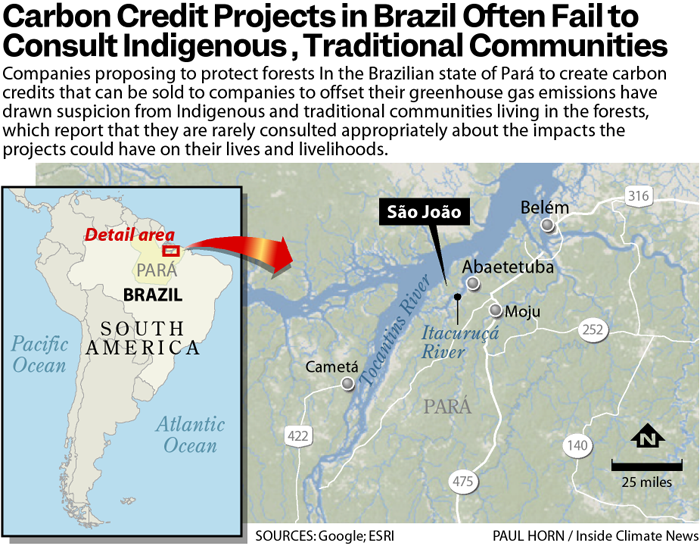
Couto told Inside Climate News that Amazon Carbon convened meetings with traditional communities throughout the region near the municipalities of Acará and Abaetetuba. It presented proposals in an attempt to convince local representatives they should sign contracts, which would in turn facilitate the sale of carbon offsets, or credits, on the voluntary market.
“What struck me most was that all the company’s explanations were in English,” explains Couto in Portuguese. “I don’t speak English and neither do other people here.”
But the company representatives didn’t seem interested in hearing from the quilombola residents, regardless of the language they spoke.
“If we asked anything, we were interrupted or ignored,” Couto said.
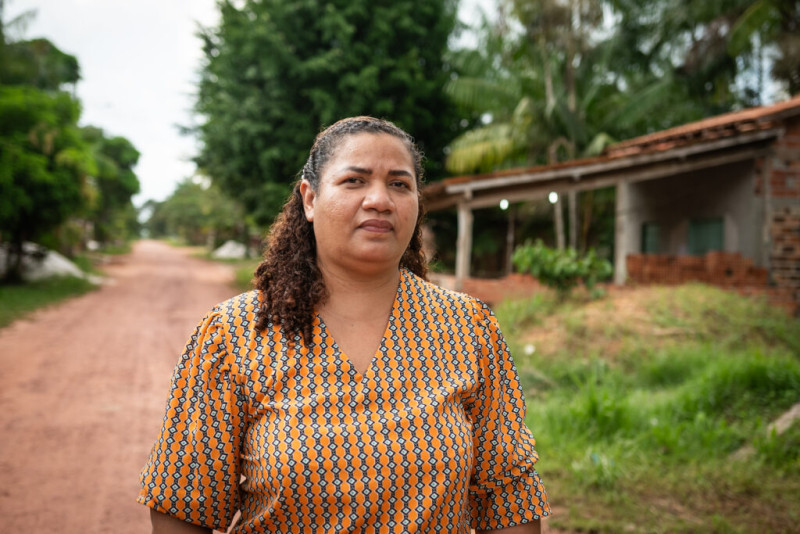
Specific project details and specifications were excluded that would have been relevant to community members. This included basic information, such as any potential risks for entering into the agreement and what areas of the community’s traditional lands might be covered. Neither offsetting nor carbon credits were explained in a way they could understand.
“The communities had a month or so to sign the contracts, otherwise the investors would look for another community that had no objections to the terms, because it was a very big investment. They were talking millions [of Brazilian reais, equivalent to hundreds of thousands of U.S. dollars],” recalls Couto, clearly astounded.
Potentially more troubling, much of the communication occurred during the Covid-19 pandemic in 2021, when many eyes were turned away from the plight of the region and its traditional populations.
The public prosecutor Couto spoke with ultimately recommended that negotiations with the company be suspended. Couto’s demand, as it turns out, was not isolated: Many other complaints wound their way to the prosecutor’s office, leading the office to publicly alert traditional and Indigenous communities to the advance of companies intent on selling carbon credits elsewhere in the Amazon.
Amazon Carbon has declined to provide comment for this story after repeated contact.
Up in the Air
At its most basic, the voluntary market for credits in projects planned for places like São João allows emitters—companies, governments or even individuals—to offset their greenhouse gas emissions by investing in projects that cut atmospheric carbon dioxide.
Each credit corresponds to a metric ton of reduced, avoided or removed carbon dioxide or an equivalent greenhouse gas. This process sounds like the stock or commodity futures markets, but the reality behind the projects tends to be much more fraught.
Voluntary offsets have been around conceptually since at least the 1970s, when the first programs to offset emissions of several gases, but not carbon dioxide, were floated for market trading in North America and Europe. But the efforts gathered steam with the adoption of the Kyoto Protocol in 1997, which paved the way for industry and governments to offset the emissions of climate warming gases. The 1990s were heady times for credits, after their success in curbing sulfur dioxide, which causes acid rain, as well as nitrogen oxide, a pollutant that was once far more prevalent than it is today.
With little appetite for a global carbon tax, the U.N. in 2005 recognized the need to combat climate change and deforestation using the free market. It mainstreamed a program called REDD (Reducing Emissions from Deforestation and Forest Degradation in Developing Countries), adding a “+” in 2010 for other forest-related activities, such as sustainable forest management and conservation. Eventually, the U.N.’s methodologies were adopted by private carbon credit certifiers and ballooned in popularity: In 2020, these projects generated over $1 billion in revenue for developing countries. REDD+ provides huge incentives to the voluntary carbon market and offset projects to motivate governments to preserve their forests with financial rewards.
In 2015, voluntary offset projects were key planks in the Paris Agreement, allowing tropical countries with large tracts of forest to reach their emissions targets more easily.
Brazil’s flagship REDD+ program, the Amazon Fund, was started in 2008 but gained minimal traction before being eliminated by former President Jair Bolsonaro in 2019. Since then, though, voluntary credits have made a fierce comeback.
But their implementation hasn’t all been a smooth ride. REDD+ projects have been in the news recently for how they can lead to displacement of local people and for failing to reduce atmospheric greenhouse gas concentrations. In addition, there is huge potential for companies to use offset projects as a tool for greenwashing, with companies boasting of the carbon credits they purchased to offset their emissions that don’t actually reduce their impact on the climate. If any of the various links of the voluntary carbon credit value chain—local communities, project developers, brokers, certifiers and buyers—are weak, the system can fail to deliver the promised benefits.
At COP26, the U.N. climate talks in 2021, delegates weren’t that concerned with these defects, but with demonstrating some kind of climate action. They signed a global recommitment to carbon markets that set off a hunt for projects that could provide the somewhat ephemeral concept of additionality (a carbon offset credit is only considered “additional” if it represents a reduction in emissions that would not have occurred otherwise).
Another driver has been the explosive growth in “net-zero” proclamations from the private sector since the Paris Agreement, many of which have been exposed as false or misleading.
Renewable energy projects had been a solid source for carbon offsets, but in the last few years, as such developments have reached cost parity with their fossil fuel competitors, most of them would be built without the incentivization of the credits, so they no longer provide additionality and are less of an opportunity for the carbon market. That’s made forest-based projects, as they are referred to by many in the offset world, like those that are part of REDD+, increasingly attractive to investors. Brazil is particularly popular.
“Brazil has highly privileged conditions in which to develop a vibrant voluntary carbon credit market,” the global consultancy McKinsey & Company wrote in its 2022 report, The Green Hidden Gem. “15% of the world’s entire carbon offset potential through natural climate solutions resides in the country.” The McKinseys of the world equate avoided CO2 emissions with return on investment, and in the world of finance there is only upside to more credits entering the marketplace.
An August 2023 report from the influential multinational bank Barcalys has underlined the seemingly endless upside of forest-based offsets for the global financial sector. Valued at roughly $500 million annually now, the voluntary carbon market could hit $1.5 trillion by 2050, the report stated.
Pushes at recent U.N. climate conferences have emboldened this zeal, while the government of President Lula Inácio da Silva has touted credits at every turn, including during the international Amazon Summit held in the state of Pará in August.
While throughout his presidency, Bolsonaro’s administration appeared to be in constant denial about the amount of deforestation in the country’s “North” (how Brazilians usually refer to the Amazon) and indeed embraced the disinformation spread about the region’s plight, Lula has signaled interest in cashing in on keeping the forests standing—to the tune of potentially $20 billion over the next decade. And the governor of Pará, who has been cited as a possible successor to Lula, has repeatedly highlighted carbon credits as an income-generating tool for the region.
But all this has also drawn significant outcry from many parts of civil society, especially in Brazil.
“These are very old ideas, carbon markets. Old ideas that keep resurfacing,” says Claudia Horn, a sociologist at the London School of Economics who’s been studying the history of REDD+ and how carbon credits have rolled out over the years in the Brazilian Amazon. “And they often just take on new forms.
“But the same pattern exists where industries, finance, they make out well while the people on the ground–the very poor and marginalized–just keep being taken for granted despite their resistance.”
In October, Carbon Brief published a global analysis of contemporary reporting on global offset projects that expanded on many of the criticisms of the practice. Most of the 24 reports identified in their systematic search were from Latin America and most of the problems identified—72 percent—had to do with harms to Indigenous and traditional peoples. Other potential threats from carbon credit projects cited in the reports, including overestimated offsets (the amount of avoided CO2 emissions may be far less due to error or accounting gimmicks), diminished food production and outright illegal land use, can compound the negative impacts on Indigenous communities.
Indigenous communities in Peru have lost access to ancestral land due to carbon capture projects, and local people in rural Congo have reported being thrown off their farmland and prevented from growing food for their own subsistence. In Colombia, carbon credit developers have co-opted Indigenous and traditional communities, failed to translate contracts into local languages and offered agreements with terms that were opaque at best.
At times, everyone from project developers to credit auditors were reading from the same playbook.
“How do I know that, you know, whatever money I’m paying for these credits really ends up benefiting a local community?” asked David Atonioli, the former longtime CEO of Verra, the nonprofit that certifies the greatest portion of the world’s carbon crediting projects “That’s a fundamentally important question.
“But in order to have a project as a developer, you have to have the claims on the carbon, right? So you have to essentially be the land owner,” he said.
Who has claims, what those claims are and even what constitutes a landowner are all questions Verra is expecting to more fully clarify with a new voluntary carbon certification methodology to be rolled out at COP28 in Dubai. But Antonioli won’t be part of that relaunch, after he stepped down in May due to pressure resulting from negative press coverage and damning academic studies of Verra’s methodology.
“What Is This Carbon Credit?”
Many quilombola communities can trace themselves to African slaves brought to Brazil hundreds of years ago, as well as to Indigenous ancestors with an even longer historical presence in the region.
For most of them, the term “carbon credit”—which spread from news reports, WhatsApp conversations and social media into the lexicon of traditional and Indigenous populations throughout the Amazon Basin during the last two years—was at first incomprehensible. While the core of REDD+ was more or less conceived of two decades ago, it is only now that ordinary Brazilians, including those living in the rural Amazon, have heard the phrase “carbon credits.”
It’s difficult to explain, even to people working in finance and climate science, efforts to mitigate climate change by keeping greenhouse gases out of the atmosphere and financial schemes to sequester carbon dioxide in trees, soil and other biomass. But it can be much harder to convey these abstractions to rural communities—especially in underprivileged areas where access to quality formal education is scant. It’s arguably even more difficult for a big city stranger to convince villagers that the carbon inside the trees and soil is likely worth millions of dollars.
None of the local people affected by offset projects interviewed by Inside Climate News were able to provide an accurate definition of the much-publicized carbon credits, let alone how the credit market at large operates.
“I don’t even know what that is,” says Manoel Santana da Trindade, a resident of the Mãe Grande Curuçá Extractive Reserve—a type of protected area carved out by famed Amazonian activist Chico Mendes four decades ago to preserve the ecosystem and provide a sustainable livelihood for local people. “What is this carbon credit? We hear about it but we don’t understand. All I know is that these trees here generate carbon credits.”
The climate crisis, on the other hand, is easy to comprehend for quilombolas, Indigenous populations and other traditional peoples. For rural Amazonians, like those in the forest community of São João, climate change is not a foreign concept at all.
Stands of açaí trees, which produce the berry that started a superfood craze in the Global North, are far less productive than they once were. Fish species that were the primary protein source for many and once prolific are increasingly scarce. The heat, which is almost always sweltering in the Brazilian Amazon, has intensified to the point of even becoming unbearable, even in remote communities near intact forests. In São João, for instance, locals often report repeated crop and livestock losses from the changing climate.
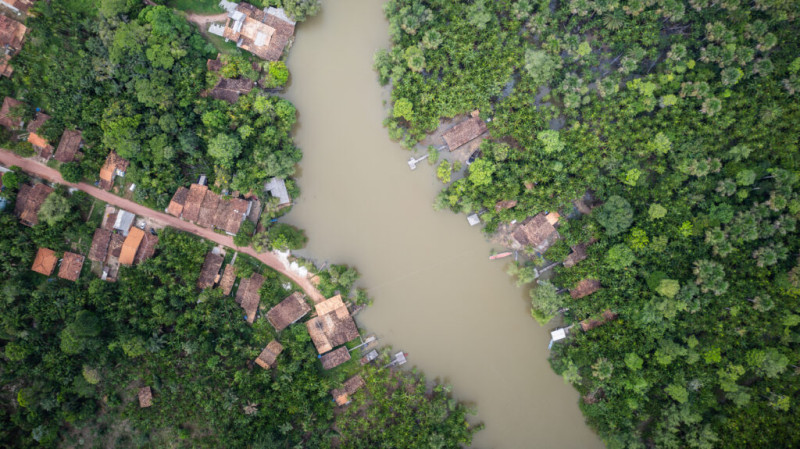
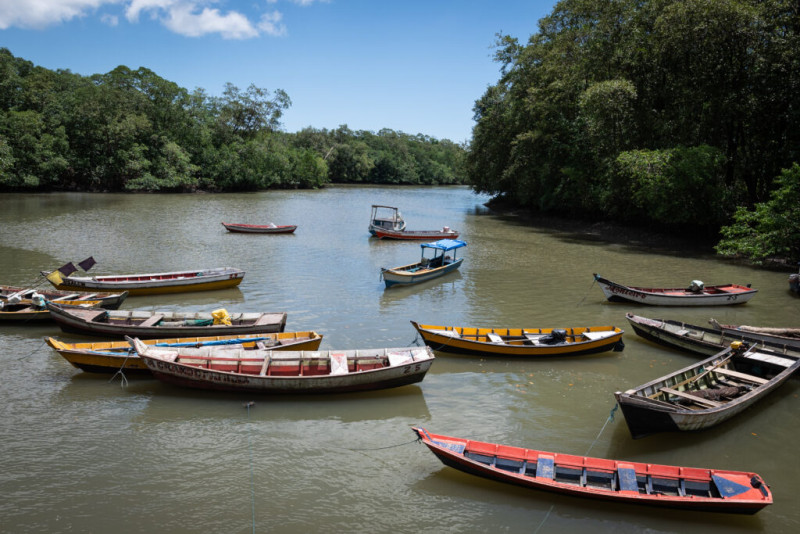
“We, the people of the Amazon, are at one with nature. If nature changes, our lives are also intimately affected,” says Célia Regina das Neves, a community leader from Curuçá, which sits near the Atlantic coast. “This is what has happened to açaí and fish, both of which have disappeared in many Amazonian communities. Neither withstand too much heat. The açaí falls from the trees before it ripens; the fish flee to colder regions.”
There’s another aspect that can be lost when focusing on offset projects as financial instruments: history. Quilombola communities (quilombos), extractive reserve populations and Indigenous people have all battled resource grabs and rampant illegal logging, ranching and mining activities. The descendants of fugitives from chattel slavery in Pará are fighting against land-grabbing and farm worker exploitation by palm oil plantations today. And the Munduruku, whose territory lies in the Central Amazon, have fought dam projects, wildcat miners and colonizers for centuries.
Brazil’s extractive reserve system was created in 1990 as a way to preserve ecosystems while providing sustainable livelihoods for local people who rely on the surrounding natural resources. Their very genesis was in violence that pitted peasants working in the forest against wealthy landowners and land-grabbers.
“Whenever something new arrives promising many things to our communities here in the Amazon, we get suspicious,” says Queila Couto. “[Outsiders] come promising miracles, but we’re used to that. Just look at the destruction caused by mining companies, hydroelectric dams and other large projects. They don’t arrive talking about the destruction they’re going to cause, but about the supposed benefits, which we’ve never seen.”
Even if today’s “carbon cowboys” seem more well-mannered and don’t wield rifles, they are still viewed with suspicion inspired by the history of exploitation, particularly if they arrive with contracts requesting the right to supervise and monitor a community’s land for 20 or 30 years.
“It’s a siren song. Every project that arrives in the Amazon is surrounded by illusory benefits, which serve to fool local people into not protesting. I’ve seen this happen a lot over the last 40 years,” observes Das Neves. “And that’s exactly what made me the warrior I am.”
“I don’t accept anyone coming into our territories as if it were a ‘no man’s land,’ whether it’s a mining company or the big fishing boats that damage our food security,” she adds.
A Gold Rush for Carbon
Pará, one of nine Brazilian states that are part of the Amazon River Basin, has been the locus for incidents of offset developers pitching projects in traditional communities and leaving discord in their wake.
Das Neves, the community leader, says when one of Brazil’s largest carbon developers, Carbonext, came to the Curuçá extractive reserve in October 2021, only a few residents ended up signing a preliminary “terms of commitment” contract.
Das Neves claims that the company’s process did not comply with the criteria set out in Convention 169 of the International Labor Organization (ILO), to which Brazil is a signatory, preserving the rights of the majority in traditional and Indigenous communities to prior, free and informed consultation. The convention requires the interests of the community’s majority be considered if a project doesn’t get the consent of all members. Carbonext, for its part, says it has suspended all negotiations with Curuçá.
“They created this system so that polluting companies can continue to kill the planet, but that doesn’t make any sense to us,” she says. “It was our ancestors who planted each of the trees that are here. And they’re not worth money, they’re the lifeblood of the people in the forest.”
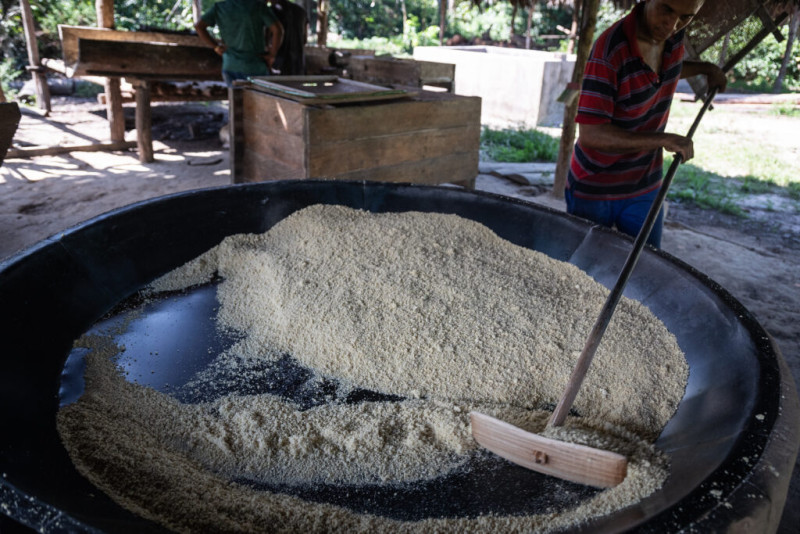
Das Neves also criticizes the way companies reach out to communities in the region, something she characterizes as “harassment,” in which they promise large sums of money without understanding the deep-seated relationships traditional and Indigenous peoples have to their lands and waters.
“[The developers] are very ambitious,” Das Neves observes, recalling an international gold rush that descended upon Serra Pelada, which is also in Pará, in the 1980s and ‘90s. “This time it’s not gold, it’s forest,” she says. The gold mine eventually became the largest in Brazil and was the subject of Sebastião Salgado’s famously grim photographs of thousands of muddy miners hauling sludge from the vast craters of the mine on slipshod ladders.
“The terms of commitment are legal instruments that authorize technical studies to be carried out in the areas,” a Carbonext representative responded in an email when asked about Curuçá and other areas where the company has projects underway. “Carbonext has no projects in Indigenous territories nor in extractive reserves.”
Residents of the community, including Das Neves, confirm that outreach to Curuçá by Carbonext has been suspended. But the company did indeed try to develop a project in Indigenous Kayapó territory. That project has since been canceled largely due to resistance from community members.
But it can be difficult to resist offset projects being established on Indigenous land, in quilombos or in Resex, often because their boundaries may be legally disputed. As recently as the summer of 2023, the carbon credit certifier Verra famously listed 11 projects registered or in the process of being registered that infringed on such lands.
The carbon cowboys who arrive in fancy pickups and sport advanced degrees in forestry and marketing tout their projects’ positive impacts in the rural Amazon, including quality of life “co-benefits” and “benefit sharing”—provisions in their contracts that in addition to promoting carbon sequestration, also seek to alleviate poverty, protect the environment, enhance biodiversity, improve forest governance and protect human rights—stemming from the REDD+ instrument.
Yet companies like Carbonext and Amazon Carbon do not appear to be adhering to the legal requirements laid down by Brazilian constitutional law, especially as it relates to ratification of ILO 169. Instead of consulting with a majority, more often than not they co-opt a leader or a handful of community members to claim legitimacy in the process. That tactic is common with developers of projects throughout Latin America and around the world.
But the truly Wild West days of the voluntary carbon credit market–at least in Brazil–appear to be numbered. Legislation is currently being finalized in the country’s congress that lays out how carbon offsets will be commercialized through the Brazilian Emissions Reduction Market (MBRE), a cap-and-trade model. The legislation establishes a 25,000 metric ton-per-year emissions cap for national industry, impacting around 5,000 companies in sectors like oil, gas, chemicals, steel and cement. They’ll have to purchase credits to offset any emissions above the cap.
In anticipation of the MBRE’s enactment, Brazil’s state-owned petroleum company has committed itself to the voluntary market before the mandatory or compliance market goes into effect.
But the new legislation excludes agriculture altogether, despite the sector being the biggest driver of deforestation in the country, and one of the biggest, if not the biggest, contributor of emissions. It’s not a stretch to say that politically powerful agribusiness is getting a pass.
There is some interplay between domestic and international priorities as well. A primary motivation for the new law is to guarantee effective participation of the Brazilian government in offset project negotiations that involve foreign capital, like voluntary offset projects for credits sold internationally. Communities throughout the country have consistently called for such regulation, particularly in the Amazon. For many rural Amazonians, regulation implies protection against fraud or bad faith terms of commitment.
“Regulation of this market is good, but it’s market-driven,” says Horn. “It still doesn’t address fundamental problems in the Amazon like land reform, agrarian reform and the demarcation of Indigenous territory.”
“This is a big gap,” she adds.
Forest Export Outpaces Regulation
With Brazil claiming to return to the fight against deforestation and global warming this year, the voluntary carbon market is being lauded by prominent politicians as the agriculture-dependent country’s “newest commodity.” Carbon is a green solution that will prime its “bioeconomy,” in the words of President Lula. The term “carbonegócios”—carbon business— has cropped up in the past few months to complement Brazil’s “agronegócio”—agribusiness—sector.
There appear to be nearly 50 offset projects in the Brazilian Amazon verified by auditing firms, which by mid-2023, collectively amounted to hundreds of thousands of credits and, potentially, a reduction of millions of metric tons of greenhouse gases from the atmosphere.
But throughout the region, the promise of untold riches is driving rampant speculation in carbon offsets and a hunger for new projects, many of which are years away from being fully verified by an auditor. The credits are not cataloged or thoroughly registered in any state or national database. Currently, there is no national repository to access data on carbon offset projects in Brazil other than what certifiers, including new Brazilian firms, and outside institutions like the World Bank, make available to the public.
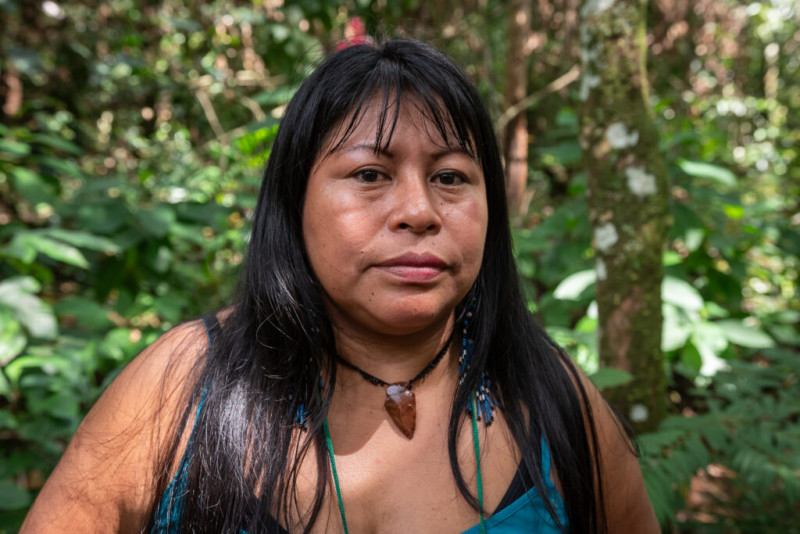
While the new cap-and-trade regime may bring greater transparency to projects, imminent legislation at the national level may well have the effect of officially registering voluntary offset projects, both at their earliest stage as well as to the point when they are verified and considered tradable instruments on the market. But, as with mining, forestry and ranching, the carbon rush is racing ahead of the capacity to regulate it and outpaced the reach of environmental law and Indigenous and traditional rights.
The country’s environmental enforcement agency, IBAMA, has approximately 543 employees— many of them administrators and office staff, rather than field agents—tasked with enforcing environmental law in a region roughly half the size of the United States. And it’s an open question as to who will enforce the new national cap-and-trade regulations as the number of offset projects on the ground or in the works surges, especially with consideration for the ILO 169 provision of the Brazilian Constitution.
All of this is deeply concerning for traditional and Indigenous populations, whose territories have become the targets for offset projects precisely because they have kept the forest and riverine ecosystems they inhabit intact.
At this summer’s international Amazon Summit in August, Goldman Prize recipient Alessandra Munduruku, an Indigenous rights activist, had very little patience for entrepreneurs arriving over the last 15 years to capitalize on the carbon boom. “It is very easy when the World Bank comes from outside to say that it protects the Amazon, that everything is sustainable, but does not respect consultation protocols or human rights while people are dying,” Munduruku said, recalling the violence that wildcat miners, loggers and ranchers have brought the area. “Now, to make matters worse, the carbon credit has arrived.”
Quilombos on the outskirts of towns, in remote Indigenous territories and in the thriving Resex reserves express fear that their ability to fish, collect Brazil nuts or hunt on traditional lands will be constrained by contracts with offset developers.
At the Mãe Grande de Curuçá Resex, where the rainforest meets the ocean along a coastline with knotty mangroves, Célia das Neves recounts how unpleasant her experience with the offset project developers was, including the strife within the community the project developers set into motion. But she retains the most indignation for those who believe carbon credits are a key to staving off global warming and conserving the ecosystems everyone seems to at least agree are vital.
“We want guarantees, security that this environmental compensation policy will not harm our ancestral ways of life,” says Célia das Neves. “If they want to preserve the Amazon, why didn’t they ask us how to do it? Why do they come with models pre-made for us if we’re the ones who plant and care for this forest?”
Share this article
Disclaimer: The copyright of this article belongs to the original author. Reposting this article is solely for the purpose of information dissemination and does not constitute any investment advice. If there is any infringement, please contact us immediately. We will make corrections or deletions as necessary. Thank you.







